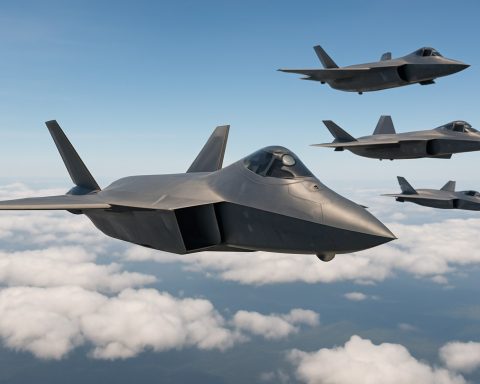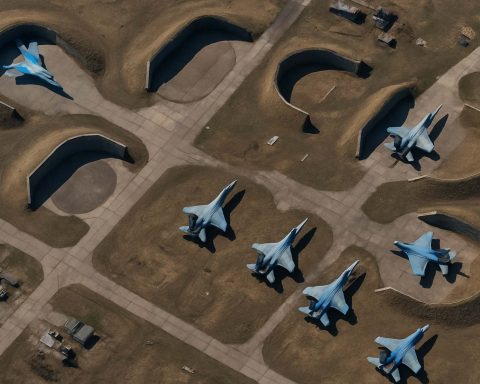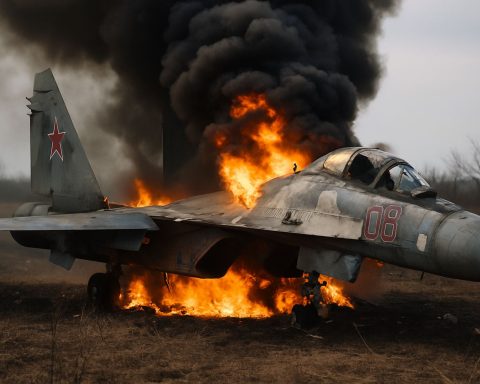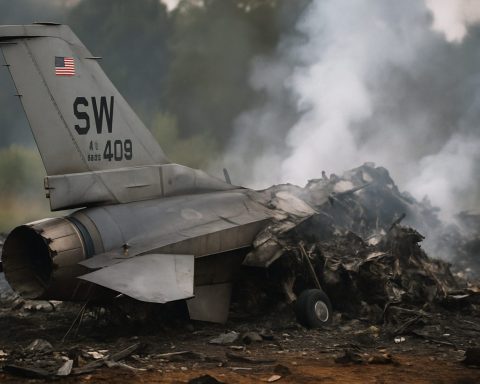- The military aircraft ejection seat is central to modernizing aviation safety, driving technological advancements in the aerospace market.
- Ejection seat innovations include rapid canopy separation, height-adjustable seating, and increased ejection thrust, enhancing pilot safety.
- Technological integration of AI, automation, and IoT elevates ejection systems, offering unprecedented agility and responsiveness.
- Defense budget increases in Asia-Pacific and the Middle East fuel demand for cutting-edge ejection seats despite financial investment challenges.
- Eco-friendly initiatives influence ejection seat materials and manufacturing, aligning with global sustainability goals.
- Emerging economies present opportunities for tailored ejection seat solutions, balancing innovation with fiscal and environmental responsibility.
Unseen from the simmering skies, a quiet revolution unfolds in the military aviation landscape. As nations worldwide fortify their arsenals with next-generation fighter jets and bombers, there’s an essential gear silently claiming center stage—the military aircraft ejection seat. It’s not just a safety feature; it’s a life-saving marvel that continues to drive the aerospace market forward with its evolving sophistication.
In a high-stakes scenario where every second counts, the necessity of ejection seats becomes undeniable. The prospect of enhanced safety measures propels armed forces to seek unparalleled reliability, ensuring their pilots can navigate emergencies with confidence. As defense budgets burgeon, particularly within burgeoning economies in Asia-Pacific and the Middle East, the development of state-of-the-art ejection seats is not merely a trend—it’s a necessity.
Techno-driven economies are leading this aviation metamorphosis. Advanced ejection mechanisms, fortified by innovations such as rapid canopy separation, height-adjustable seating, and increased ejection thrust, reshape how pilots perceive safety. These advancements represent more than mere tweaks; they’re comprehensive leaps that redefine industry benchmarks.
Innovation is the Lifeblood
The crux of this transformation lies in rapid technological overtime, harnessing the synergy between artificial intelligence, automation, and the Internet of Things (IoT). These integrations propel ejection systems beyond conventional limits, offering unprecedented agility and responsiveness, thus providing a robust shield for pilots.
While innovation steers the helm, financial landscapes dictate the pace. The hefty initial investments and substantial operational outlays could deter some, especially in nascent markets. However, amid these challenges lies a vast expanse of opportunity. Emerging economies, simmering with industrial evolution and infrastructure renewal, provide fertile ground for entrepreneurial ventures that can tailor solutions to unique regional needs—an endeavor not without its fair share of reward.
Eco-Friendly Flight: A New Horizon
Adding further complexity to this airborne tapestry, green technology strides enter the arena. Eco-conscious policies and carbon neutrality goals coax manufacturers to adopt environmentally friendly practices. Military aircraft ejection seats now increasingly comprise recyclable materials and energy-efficient components, aligning with global sustainability mandates—a venture both noble and commercially viable.
As the tapestry of military aviation unfurls, one truth remains constant: the relentless pursuit of excellence and safety continues to shape the ejection seat market’s upward trajectory. The pursuit is not just a saga of technological superiority; it is a keen balancing act of innovation, fiscal prudence, and environmental responsibility.
In conclusion, as military aviation fleets modernize, the ejection seat market emerges as an emblem of resilience and progress. Innovation, sustainability, and the untapped potential of emerging economies promise a thrilling ascent. It’s a clarion call to those who navigate these skies that the only way forward is up.
The Hidden Hero: How Ejection Seats are Revolutionizing Military Aviation
The Evolution of Military Aircraft Ejection Seats
Military aircraft ejection seats have evolved tremendously from their initial design roots. Initially, these seats were simple mechanical contraptions, but today, they are complex systems that incorporate advanced technologies to ensure pilot safety under various emergency scenarios. Below are some aspects that were not fully explored in the original article.
Innovations and Features
1. AI and IoT Integration: Modern ejection seats leverage artificial intelligence (AI) and the Internet of Things (IoT) to enhance decision-making processes. AI can analyze flight data in real-time to suggest the best ejection timing, while IoT enables constant connectivity and diagnostics for seat components.
2. Automated Systems: Automation has become integral, reducing reaction time by automating processes like canopy detachment and seat deployment, which were previously manual.
3. Advanced Materials: New materials like carbon fiber and advanced composites are making seats lighter yet incredibly strong, helping to improve the performance and fuel efficiency of military aircraft.
4. Modular Design: A modular setup allows for customization of ejection seats. This design approach provides flexibility, enabling armed forces to tweak specifications tailored to different aircraft models.
Market and Industry Trends
– Emerging Economies: Markets in Asia-Pacific and the Middle East are increasingly significant as nations in these regions boost defense budgets to modernize their fleets. This points to a growing demand for sophisticated ejection seats.
– Environmental Considerations: The push for sustainability is reshaping production lines. Recyclable materials are now essential, aligning with global eco-friendly mandates. This shift not only makes production greener but may also reduce long-term costs.
– Budget Constraints: Despite technological advances, initial costs and ongoing maintenance can be barriers. Yet, governments are weighing these costs against potential civilian and military life-saving capabilities.
Real-World Use Cases and Controversies
– Case Study: F-35 Lightning II: The ejection seats in the F-35 incorporate automatic height-adjustment and position monitoring, illustrating the role of ergonomic design in enhancing pilot safety and comfort.
– Controversies: Some controversies revolve around the safety of specific ejection seat models, especially regarding their applicability for heavier pilots or those wearing full combat gear. Pilots’ safety in different scenarios, like low-altitude ejection, continues to be an area of focus and improvement.
Recommendations for Future Development
1. Focus on Lightweight Solutions: Further research into lightweight materials can enhance operational efficiency and reduce fuel usage.
2. Enhanced Training Simulations: Incorporating virtual reality (VR) for ejection seat training can prepare pilots better, enhancing reaction times during real emergencies.
3. Continuous Monitoring Systems: Developing systems to monitor ejection seat status continuously could help anticipate failures and possibly prevent accidents.
Conclusion and Actionable Tips
As military technology advances, ejection seats remain critical to ensuring pilot safety. Takeaways for aviation stakeholders include investing in AI-driven safety mechanisms, prioritizing eco-friendly materials, and fostering partnerships in emerging markets to drive innovation while controlling costs.
For further insights on military technology advancements, visit the official websites of leading aerospace and defense companies like Boeing or Lockheed Martin.
In the fast-paced world of defense aviation, the ejection seat symbolizes resilience and innovation—a silent sentinel guarding the skies while promising a safer future for those who soar through them.







